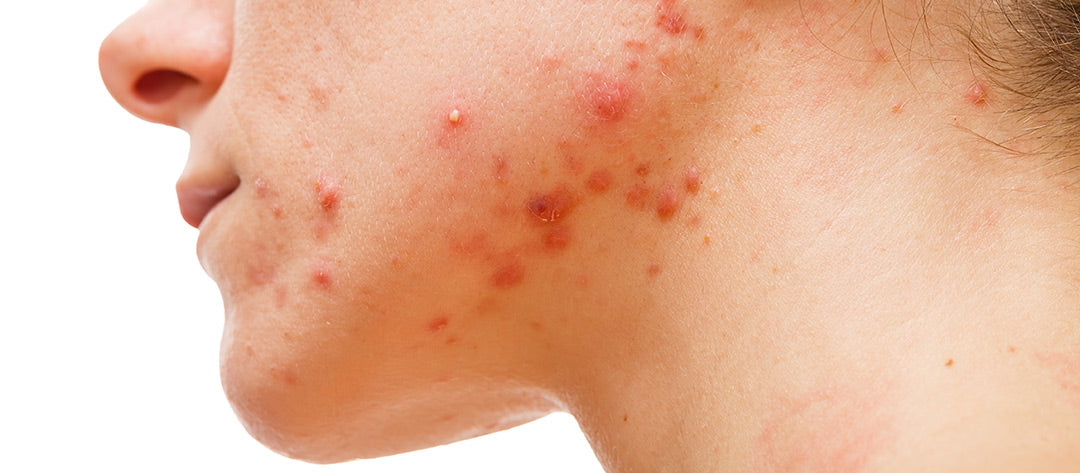Red Bumps that have the initial appearance of acne but don't really look like the acne you've had in the past. This time it's different and even the way your skin reacts to your old reliable acne treatment is different. This time instead of getting better and diminishing the spots, it gets worse, your skin is redder and more irritated.
This is when it's best to stop, examine the symptoms and re-diagnose. If the bumps are red, look like acne and form the tell-tale acne whitehead, your first thought is acne. But looking closer, the acne whiteheads have a soft top, almost squishy feel to them. And the ones you have now are firm and hard on the top of the whitehead. And you may notice that your skin doesn't feel oily as it always had with acne, but rather your skin's surface feels dry and sensitive with an irritation that resembles rosacea
With so many similarities, how can you distinguish between Keratosis Pilaris and Rosacea? With rosacea the facial skin has a tendency to stay red or inflamed and the raised bumps associated with rosacea are more commonly red with no component of pus. Many people have found that Keratosis Pilaris responds to deep exfoliation but rosacea and acne will often worsen with such treatment. The risks associated with deep exfoliation are that one can damage the skin or create increased skin sensitivity from too harsh or strong a treatment and if one should happen to have a combination of skin conditions; exfoliation treatment can make acne skin more oily as it reacts by creating an increased oil barrier to protect the skin or in the case of rosacea the skin becomes redder, more easily irritated and more sensitive.
The solution than becomes finding a way:
- to clean the skin,
- gently exfoliate,
- address the symptoms of the skin surface distress,
- treat the underlying cause of each skin condition effectively or to treat the combination of one or two existing conditions without further damaging the skin. Let's address these one at a time.
To clean the skin
Acne has a bacterial component, cleaning the skin is essential. If we don't thoroughly and gently clean the rosacea or Keratosis Pilaris skin, it can lead to clogged pores causing acne, thus further complicating the treatment plan. The goal here is to find a gentle cleansing bar that does not contain harsh deodorizing cleansers or perfumes. Also key here is to avoid products contain lanolin as this is often irritating to already sensitive or damaged skin. An example of a pure gentle cleanser would be Neutrogena for dry sensitive skin or Dove unscented.
You may think, but I have acne I should use an acne soap; the problem here is that the combination of acne drying soaps and acne drying treatments is too much, too drying on the skin causing the skin to go into survival mode and produce more oil to protect the outer layer of skin which is being perceived to be under siege from the over-drying applications. Resist the urge that if a little helps, more must be better, sadly that is most often not the case.
Gently exfoliate the skin. This has benefits to all three conditions but again too much of good thing becomes a bad thing and causes further damage to the skin. The most effective way to gently exfoliate the skin is with a soft wash cloth and apply with a gentle massaging motion.
Address the symptoms of the skin's surface distress. Treat the skin surface with a gentle but effective treatment plan that will not cause additional damage to the skin. Moisturize the skin to prevent additional dryness with a skin compatible moisturizer such as jojoba oil. Jojoba oil is easily absorbed into the skin with the benefit of not clogging the pores or causing additional symptoms of irritation. Two to three drops applied lightly over the damp skin is all that's needed to be effective.
Treat the underlying cause of each skin condition.
The root cause of all skin conditions is inflammation. The cause of inflammation is irritation is caused by an acidic imbalance in the body. When the body's natural balance is upset the skin as the body's largest organ is the first to display signs of distress.

